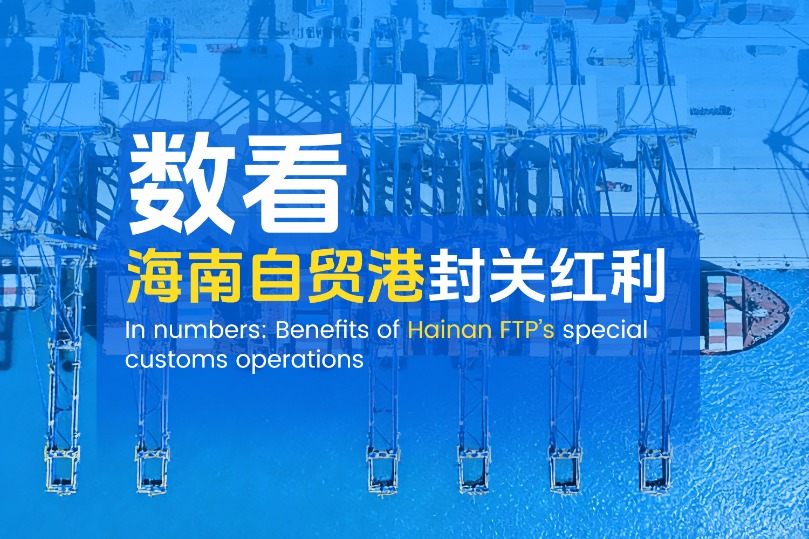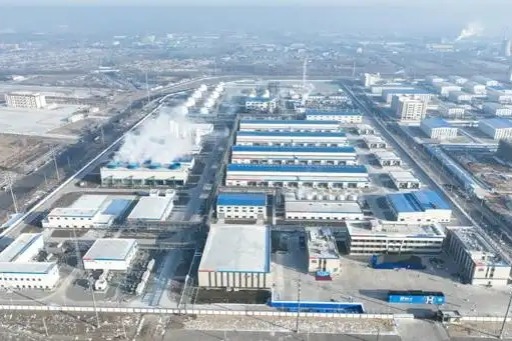Making sense of the merger

|
Marie Gabrielle Cajoly (third from left) and the communications and CSR team celebrate the launch of Addax Petroleum Petroleum Corporate Values. Provided to China Daily |
Sinopec makes big strides in global integration planning with Addax Petroleum deal
Integration planning after merger and acquisition deals has always been a tough challenge for companies. But the same challenge can also be a winning opportunity, going by the success achieved by a state-owned Chinese company in Europe.
In 2009, eyebrows were raised when Chinese oil giant Sinopec decided to take over the ailing Swiss-based oil company Addax Petroleum in a $7.6 billion (5.8 billion euros) deal. Many analysts and experts predicted rough weather, citing the huge cultural and management differences between the state-owned Chinese firm and the independent private firm.
In the four years since, Addax Petroleum has not only become a profitable enterprise for Sinopec, but an example of successful global integration planning by a Chinese company.
Since 2009, Addax Petroleum has created more job opportunities in Europe, US and Africa, across various categories, at a time when very few jobs are being created globally. At the same time, Addax Petroleum has seen very little attrition, and most of its employees have kept their faith in the Chinese management.
Further testimony for the integration came after Sinopec board chairman Fu Chengyu urged the Chinese company to use the Addax Petroleum integration model for all of its subsequent deals. More accolades came when the Addax Petroleum deal was selected as a model case study in integration planning by IMD, a Switzerland-based global business school.
"Much of our success stems from the fact that Addax Petroleum has been able to retain its international genes and core strengths," says Zhang Yi, chief executive officer of Addax Petroleum.
Zhang says the deft handling of the integration process can be seen in the company's robust indicators. Addax Petroleum's oil production is expected to reach 10 million tons this year, compared with 6.75 million tons in 2009. The company's total profit has risen significantly over the past four years. By 2018, the company also expects to retire all of its debts.
At the same time, Addax Petroleum is also looking to expand its presence in Africa, especially in nations like Nigeria, Gabon and Cameroon. In addition Addax Petroleum also has a 49 percent equity interest in Talisman Energy (UK) Ltd along with access to oil and gas resources in the North Sea.
Zhang says that a combination of factors, like the leadership of Sinopec and the collective commitment of teams in Europe, Africa and US, have helped fuel the success.
"When we started the integration process, I had insisted that the company should continue to be managed by foreigners," Zhang says. The first step was to retain the incumbent management team, he says.
"Out of our total staff strength of 1,132, only 18 are from China. By retaining the diversity of Western, African and Chinese cultures and sharing a collective vision of overall growth we have made considerable progress," he says.
Zhang admits that he was nervous at first when he was asked to manage the integration process. "I had never worked abroad nor conducted a M&A integration process before. My experience was mostly in senior technical and management positions with Sinopec in Shandong and Henan provinces," he says.
Zhang says that he realized that it was prudent to make decisions after consulting more experienced professionals like Marie Gabrielle Cajoly, head of communications and corporate social responsibility. Cajoly currently heads a team of eight in Geneva, and her main role is to supervise and enhance Addax Petroleum's "soft skills".
Cajoly also admits that she did not know much about China or Sinopec when she was entrusted with the integration process in 2009. "Addax Petroleum was a fast-growing, medium-sized company listed in Canada and the UK. The Company had inherent strengths in oil exploration and production and required long-term financing to underpin further expansion. This was one of the reasons for considering selling the business."
According to Cajoly, "fear" and "apprehension" are the words that can best describe the pre-integration mood at Addax Petroleum .
"Sinopec sent me to Geneva as a learner during the transitional period," Zhang says, recalling that his first priority was to retain existing personnel.
Cajoly, on the other hand, says her first task was to understand how Chinese people work and interact and to educate Chinese people on how Western employees work and think. The second priority was to understand Sinopec's culture and its long-term vision for Addax Petroleum. Both the objectives were achieved during the three-week training sessions at the Sinopec headquarters in Beijing.
"During that trip, I realized that it was important to let the Addax Petroleum employees across Africa and Europe better understand the Sinopec strategy and long-term plans for Addax Petroleum, so that they could appreciate the role they could play to support its growth and the professional and personal development offered to them within the organization," she says.
Cajoly says that though there have been ups and downs in the integration process, the ride has been relatively smooth. "Initially the Chinese employees were apprehensive on hearing statements like ' I suggest, I believe, I advise' being made by the Westerners. Soon they realized that it was not about being aggressive, but more a part of the Addax Petroleum culture of encouraging stronger participation and expressing views at meetings. At the same time, we also made the Western team understand that they need to leave space for others, as Chinese people are often indirect and hesitant in expressing their opinions.
"This may seem anecdotal, but it is really something that is important in the day-to-day management process," she says.
Cajoly cites her own experiences in Beijing as an ideal example of how to manage cross-cultural changes. "To understand one another's other culture does not necessarily mean that you should change your own culture and your habits. It is something that is not possible," she says.
Instead, she says the purpose should be to better understand the habits that Westerners, Chinese or Africans are used to for years. "After knowing and understanding them, one will also be able to appreciate them," she says.
Cajoly says she was lucky because her superiors were direct, straightforward, open-minded and supportive. She says she sees this as an adjustment of "spontaneously speaking my language" because being straightforward is not part of Zhang's culture.
"Zhang is making efforts for me, which in itself is a foundation of trust. I would make similar efforts for him also. This is how collaboration starts because both sides take similar steps," Cajoly says.
To build more trust, Zhang has advocated other rules to maintain the company's culture of transparency. He has insisted that the 18 Chinese employees not hold meetings by themselves and also that if a foreigner is present, conversations in Chinese should be avoided.
Cajoly recalls that Zhang once told her cultural integration and communication are the soft skills of a successful company, while the hard skills are financial and technical prowess.
Cajoly's cultural initiative has been named as the "pearl project", which focuses on people, energy, action, results and leadership, key components of an oil company's success. The initial letters of these five words form the word "pearl".
She divides the process of cultural integration into four. During 2009-10, it was a transitional period, when Addax Petroleum and Sinopec started to know each other. In 2010-11, the cultural integration process started and a lot of projects and dialogues were launched to express visions of Sinopec for Addax Petroleum and to explain what would be the contribution of Addax Petroleum to Sinopec.
Cajoly says 2011-12 was the consolidation stage that involved the convergence in cultures.
She says during these various stages, Addax Petroleum and Sinopec have come to know each other's strength and weaknesses, and Addax Petroleum employees better understand Sinopec's vision and management philosophy.
In addition to African, Chinese and Western cultural session trainings, the employees also have an extra day off to celebrate Chinese Spring Festival even as they retain their tradition of spending Christmas holidays.
Based on the cultural projects and the employees' inputs, the company has made several public core values, which include integrity through action, harmony through diversity and value creation through excellence. "It is important for us to translate the words to action and behavior."
"The loyalty of the employees has been bolstered through the integration process," Zhang says.
He says only 6-8 percent out of the company's more than 100 employees left Addax Petroleum , after it became a part of Sinopec. But statistics show that on average, about 15-20 percent employees choose to leave in Western countries if their companies are sold.
Cajoly says she is one of the Addax Petroleum employees who have benefited from working for a state-owned company in China. This year, she is going to receive a silver statue with the company's slogan "Each step makes difference. And difference makes strength" for her contributions to Addax Petroleum during the past 10 years.
"I am looking forward to seeing this company grow and become, not only a multinational, but a true multicultural company," she says.
fujing@chinadaily.com.cn
(China Daily 05/10/2013 page15)
Today's Top News
- China warns about Japan's intended military buildup
- China urges EU to halt anti-subsidy probes
- Experts: Lai not freedom fighter, but a pawn of the West
- Hainan evolves as gateway to global markets
- Opening up a new bridge between China and world
- Tour gives China-Arab strategic trust a boost































